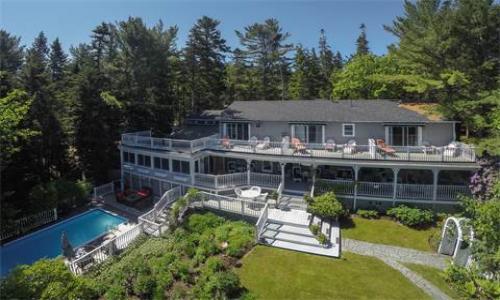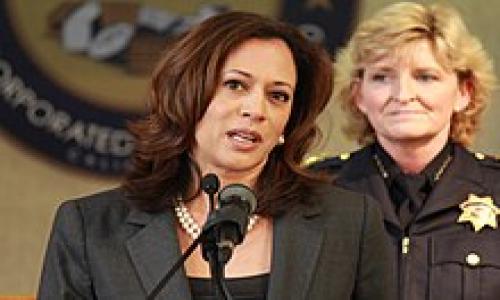Making monthly minimum payments on a mortgage can affect your wallet, retirement, and self-esteem. We’ll focus on the most effective mortgage repayment strategies like making initial and principal payments, and how to downsize expenses. A mortgage can be paid off in less than 7 years, but this will take some effort to understand the different strategies for how this can be done.
Quick Find Guide:
Why Should I Pay Off My Mortgage Faster?
6 Fast Mortgage Repayment Strategies:
- Make an Initial Payment
- Second Payment Towards the Principal
- Velocity Banking Strategy
- Downsize Expenses to Maximize Repayment
- Refinance Your Mortgage
- Make a Large Down Payment
Why Should I Pay off My Mortgage Faster?
Remember that initial cost breakdown of your mortgage? It probably has you paying a large sum of money towards interest (the amount of money paid to the bank for the opportunity of being given a loan). Paying off a mortgage faster will reduce the amount of money paid to interest over the term of the loan. When the principal is reduced, less interest is incurred, meaning you save money. The goal is to pay it off as fast as possible, so the money could be reinvested elsewhere.
6 Fast Mortgage Repayment Strategies
All of these strategies imply that your bank allows quicker payments and doesn’t have a prepayment penalty. If you’re unsure, contact your bank and ask them before using these methods. This is important because some banks will charge a flat or percentage-based fee for making extra payments.
In order to maximize the amount of time saved by paying off a mortgage faster, multiple strategies can be used at once.
As a way to visualize the following ways to pay off a mortgage faster, we’ll include an example that can be used for some strategies: Imply a $100,000 mortgage has a 30-year fixed rate of 4.50% APR, which has a minimum payment of $507 a month.
1. Make an Initial Payment
It may not seem like much but making a payment before your first scheduled mortgage payment can save thousands over the term of the loan. Since this payment is before any scheduled payments, it will directly go to the principal. For individuals looking to get started with real estate, this strategy is very effective and will ensure that money is saved over the long-term. Unless a lot of money is put down on the property, this strategy will only save you a few thousand. Making an initial payment of 25% of the mortgage will shorten it dramatically.
Making an initial payment with the example can save $1,448.00 and making double the initial payment can save $2,896.00. This means that the mortgage could be paid off 3 to 6 months sooner.
2. Second Payment Towards the Principal
Having extra money at the end of the month is nice but paying off a mortgage faster is just as rewarding. Any net income you currently have (interest – expenses = net income) could be used to make a principal payment towards your mortgage. This second payment would be after the minimum payment has been paid for that month. By making a principal payment, it will lessen the amount of time and money needed to completely pay off the mortgage.
Making a principal payment of $250 per month will save $44,056 in interest and shorten the term of the loan to 14 years and 9 months. This cut the length of the mortgage in half and saving a lot of money in the process.
Ensure your bank is aware that this extra payment is for the principal only.
3. Velocity Banking Strategy
The velocity banking mortgage repayment strategy is a bit complex, but very effective. As you’ve had your mortgage for a few years, and currently owe less than what it’s valued at, banks will allow you to open a Home Equity Line of Credit (HELOC). This HELOC will act as your checking account, receiving direct deposits from your income streams, have an individual debit card, and act just as a normal account would.
The key here is to make lump sum principal payments to your mortgage with the HELOC balance, and then paying off the HELOC with your positive net income. Then each and every time the HELOC is fully paid off, you continue making lumpsum payments until the mortgage has been paid off.
Using a HELOC, this mortgage could be paid off in as little as 6 years and 5 months, paying only $15,582 in interest payments.
The HELOC will allow you to free up some capital for unexpected expenses, unlike a traditional mortgage repayment strategy. The strategy also requires that you have available net income at the end of every month. Learn more about Velocity Banking.
4. Downsize Expenses to Maximize Repayment
If you’re one of the millions of people living paycheck to paycheck, you may want to take a look at your expenses. Driving a new car can feel great, but your wallet is probably hurting, and your long-term debt obligations are questioning their existence. Downsizing on your spending habits will ensure that extra money could be used to pay off your mortgage faster.
Taking a long-term view at life instead of living in the short-term can open up a wide range of opportunities for reducing the amount of debt we have. Mortgages tend to be our biggest personal debts and should be paid off as soon as possible.
Creating a budget is one of the most useful tools that we can use to organize our income and expenses. By setting our primary goal of paying off our mortgage quickly, we can then approach a budget with the right mindset and decision-making process to ensure we can afford more than monthly payments. Learn more about how to create a budget.
5. Refinance Your Mortgage
A 30-year fixed-rate mortgage tend to have higher interest rates than those with a 15-year term. This is because the bank has to lend out money for an extended period of time, increasing the risk for default. Refinancing a mortgage to a shorter timeframe will reduce some interest expenses but will ultimately increase the monthly minimum payment.
Ensure the new mortgage has a lower interest rate than the previous mortgage.
If not, you’re wasting money.
When refinancing, it’s best to look over your current budget and determine how much money can go towards the mortgage every month. This is a permanent decision and could potentially leave you owing more than you can afford.
Refinancing the mortgage within the example could mean that the interest rate could drop from 4.5% to 3.5%. The fixed-rate would then be 15 years instead of 30. The refinancing would save $53,726 in interest expenses.
See mortgage refinance rates where you live here.
6. Make a Large Down Payment
The strategy is simple, put down as much as you can to lessen the amount of money owed within the mortgage. The more money you can put down initially, the less amount of interest, fees, and expenses you’ll incur throughout the life of the loan.
A typical down payment for a house is between 3 and 10 percent. Aiming for 15-20 percent may seem like a big difference, but it makes a huge difference in the amount of money being paid in interest.
Example: 30-year fixed-rate, 4.5% APR:
- $100,000 house purchased with 3% down:
Mortgage of $97,000 +
Down Payment of $3,000 +
Interest payments of $85,040
Total Paid: = $185,040
- $100,000 house purchased with 15% down:
Mortgage of $85,000 +
Down Payment of $15,000 +
Interest payments of $62,000
Total Paid: = $162,000
As we can see, making a down payment of $12,000 more can save $25,040 in interest payments. Coupled with another strategy such as making a second payment towards the interest, the amount of time to pay off A will take significantly longer than B.













Add your Comment
use your Google account
or use your BestCashCow account